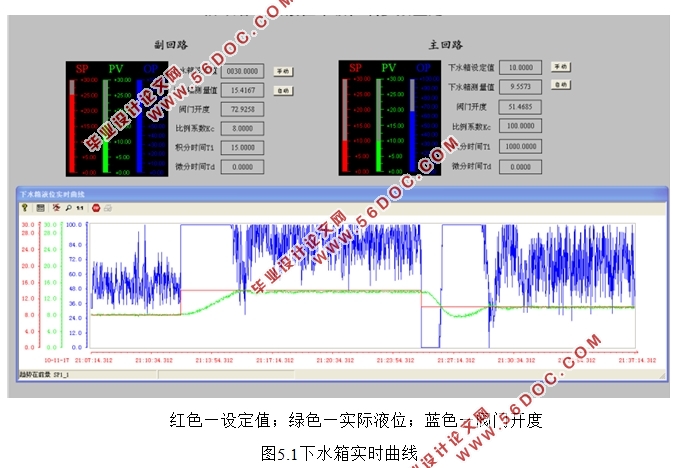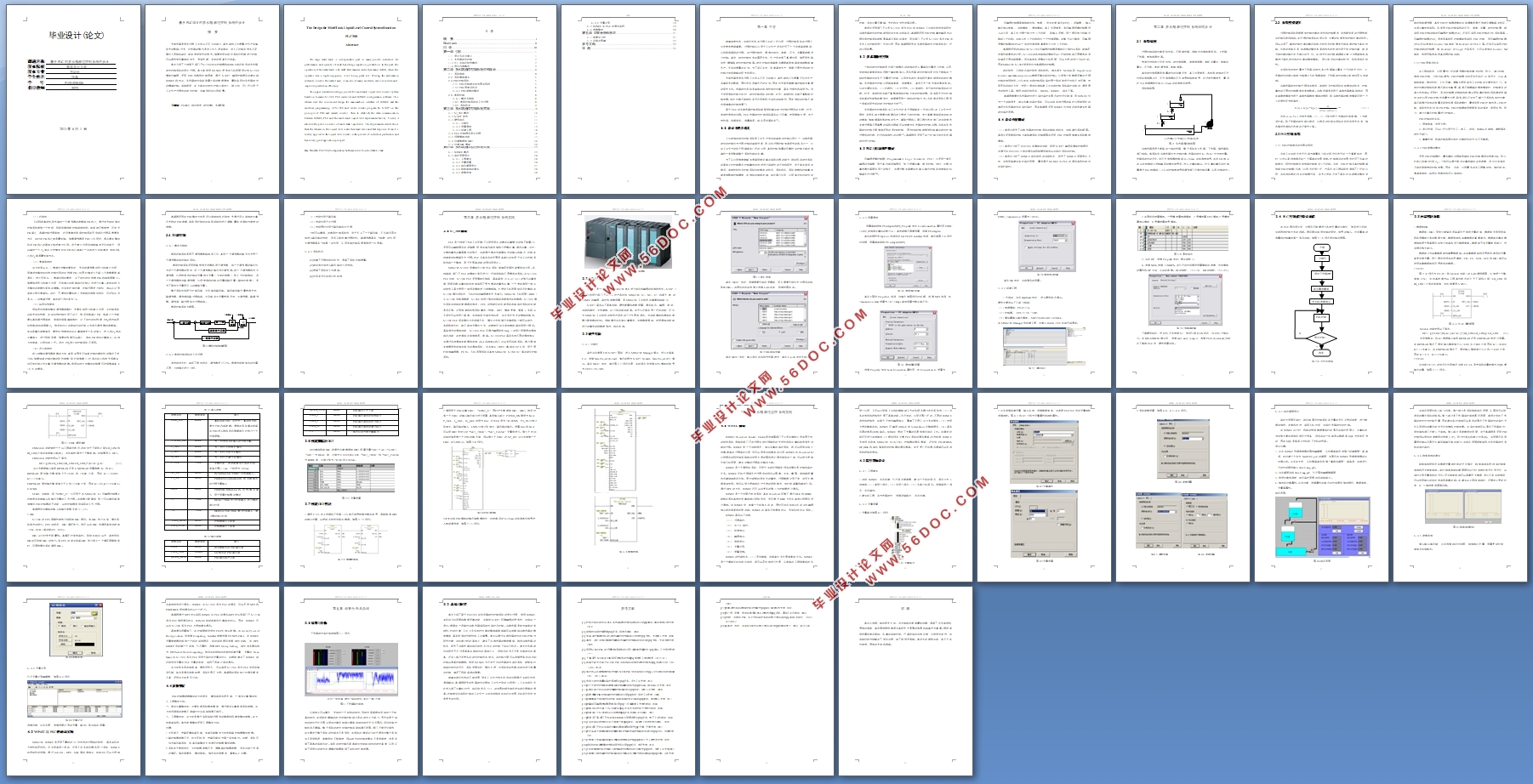基于PLC300的多水箱液位控制系统的设计(附WinCC程序)
来源:wenku7.com 资料编号:WK718567 资料等级:★★★★★ %E8%B5%84%E6%96%99%E7%BC%96%E5%8F%B7%EF%BC%9AWK718567
以下是资料介绍,如需要完整的请充值下载。
1.无需注册登录,支付后按照提示操作即可获取该资料.
2.资料以网页介绍的为准,下载后不会有水印.资料仅供学习参考之用. 密 保 惠 帮助
资料介绍
基于PLC300的多水箱液位控制系统的设计(附WinCC程序)(任务书,开题报告,论文说明书13000字,WinCC程序)
摘 要
大型水箱是很多过程工业中必不可少的部分,其性能和工作质量对生产有着巨大的影响。过去,对水箱的操作是由工作人员实施的,但人工控制有很多不足,操作人员稍有疏忽,就会带来很大的损失。如果使用自动化系统对水箱进行控制,可以避免很多事故的发生,节省资源,有效的提高生产效率。
本文介绍了一种基于西门子S7-300PLC控制器和WINCC组态软件的多水箱液位控制系统的设计过程。本方案利用WINCC便利的人机界面设计和S7-300模块化编程,采用PID和串级控制原理,通过STEP7编写控制程序并建立起WINCC和PLC、多水箱液位实验装置之间的数据通信,最终实现对多水箱液位的精确控制。实验表明,此方案在对液位控制上误差小,响应快,可广泛应用于工业生产过程中的液位控制,有着很好的应用前景。
关键词:PLC300 组态软件 液位控制 多容水箱
The Design for Multi-Tank Liquid Level Control System Based on PLC300
Abstract
The large water tank is indispensable part in many process industries. Its performance and quality of work has a huge impact on production. In the past, the operation of the water tank is by staff. But manual control has many defects, when the operator has a slight negligence, it will bring great loss. If using the automation system to control the water tank, it can avoid many accidents, saves resources and improves production efficiency.
This paper introduces a design process for more-tank liquid level control system based on Siemens S7-300 PLC controller and WINCC configuration software. This scheme uses the convenient design for man-machine interface of WINCC and the modular programming of S7-300 and writes control program by STEP7 on the principle of PID and cascade control. Then to establish the data communication between WINCC,PLC and the multi-tank liquid level experimental facility. Finally it achieves the precise control of multi-tank liquid level. The experimental results show that the scheme on the liquid level control has small error and fast response. It can be widely applied to the liquid level control in the process of industrial production and has a very good application prospect.
Key Words: PLC300;Configuration Software;Level Control;Multi-Tank


目 录
摘 要 I
Abstract II
目 录 III
第一章 引言 1
1.1 设计目的及意义 1
1.2 多水箱液位控制 2
1.3 PLC与组态软件概述 2
1.4 设计内容概述 3
第二章 多水箱液位控制系统结构设计 4
2.1 系统结构 4
2.2 系统模型建立 5
2.3 PID控制系统 5
2.3.1 PID控制理论的发展与现状 5
2.3.2 PID原理及特点 6
2.3.3 PID参数的整定 6
2.4 串级控制 8
2.4.1 概念及结构 8
2.4.2 串级控制系统的工作过程 8
2.4.3 系统特点 9
第三章 多水箱液位控制系统实现 10
3.1 S7_300概述 10
3.2 STEP7软件 11
3.3硬件组态 11
3.3.1初始化 11
3.3.2 设置通信 13
3.3.3 新建工程 14
3.4 PLC控制程序设计流程 16
3.5所需模块功能 17
3.6创建数据块DB3 20
3.7创建OB1模块 20
第四章 多水箱液位监控系统实现 23
4.1 WINCC概述 23
4.2监控界面设计 24
4.2.1工程建立 24
4.2.2变量设置 24
4.2.3组态画面设计 27
4.2.4趋势曲线的建立 28
4.2.5参数连接 28
4.2.6 变量记录 29
4.3 WINCC与PLC的通讯实现 29
4.4参数整定 30
第五章 结果分析与总结 31
5.1结果与分析 31
5.2 总结与展望 32
参考文献 33
致 谢 35
|





